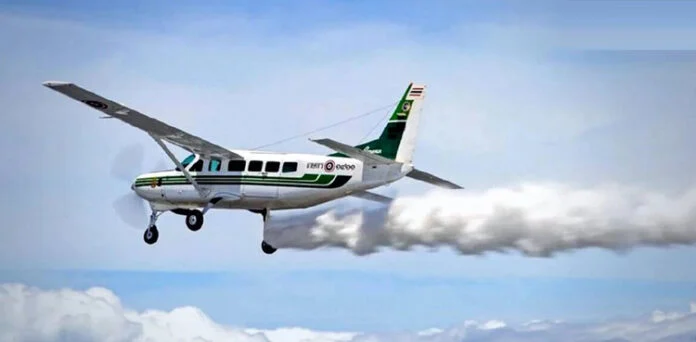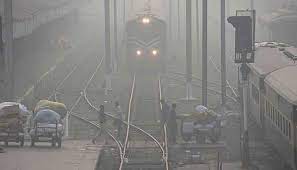The Punjab administration has begun preparing to create artificial rain in the provincial capital later this month due to the increasing levels of haze in Lahore, as The News reported on Friday.
This will be the nation’s first experiment of its type.
In this context, the assessment of short-, medium-, and long-term strategies to reduce pollution in the city was the topic of a meeting chaired by Education Minister Mansoor Qadir and Provincial Environment Minister Bilal Afzal.
Participants in the discussion included members of SPARCO, the Environment Protection Department, Secretary of Environment Rashid Kamalur Rehman, and other institutions.
A consultation discussing the use of artificial precipitation to remove smog was also held, and it was determined that plans for this should be prepared for November 28 or 29, when overcast weather is possible.
According to the province minister, a working group and team should be established to supply artificial rain, and they should consult on the use of planes for this purpose.

According to Bilal Afzal, clouds were essential, and the working group would need to take artificial rain into account in its entirety. He stated that the chief minister will receive the working group’s final recommendations for approval.
The worst air pollution is found in Punjabi areas such as Lahore, Jhang, Hafizabad, Khanewal, Nankana, Bahawalnagar, and Sheikhupura.
In the meantime, the Lahore High Court has mandated that all universities and schools in areas affected by pollution close on November 18. The government was also ordered by the court to institute a policy allowing workers to work from home two days a week.
Why does South Asia have more pollution than other regions?
Over the past 20 years, there has been a noticeable increase in the industrialization, economic development, and population expansion of South Asian countries, which has raised demand for fossil fuels and energy.
While most nations are impacted by sources like automobiles and industry, South Asia is specifically affected by a few key sources, such as burning agricultural waste, cremating human remains, and using solid fuels for cooking and heating.
For example, stubble burning in the nearby states of Punjab and Haryana—a practice in which stubble left behind after harvesting rice is burned to clear fields—has contributed to almost 38% of the pollution in New Delhi this year.
The pollution issue has also been made worse by the growth in the number of automobiles on the road in the area. For instance, during the early 2000s, the number of automobiles surged fourfold in Pakistan and India.
Almost eight million cars would be driving on New Delhi’s roadways as of 2022, with 472 automobiles per thousand people, according to official data. The city has been named the most polluting capital in the world for four years running by Swiss Group IQAir.






